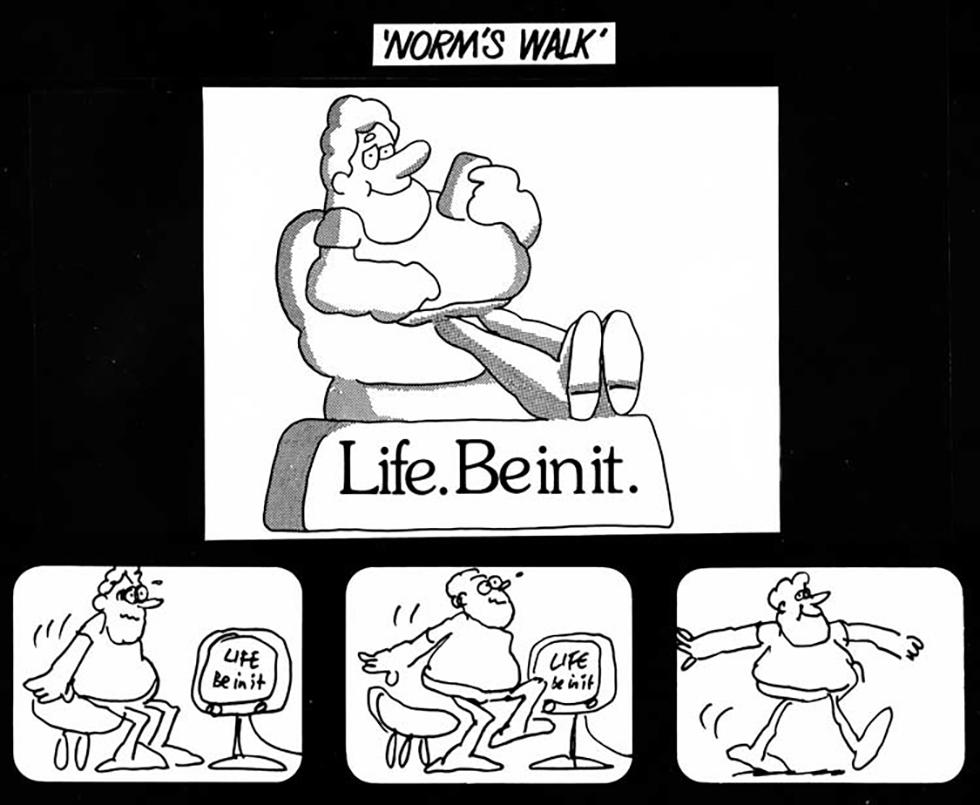
Norm cartoon character
Aboriginal and Torres Strait Islander people should be aware that the National Archives' website and collection contain the names, images and voices of people who have died.
Some records include terms and views that are not appropriate today. They reflect the period in which they were created and are not the views of the National Archives.


Norm cartoon character
This black-and-white cartoon by Alex Stitt is from the 1977 ‘Life. Be in it’ national public health campaign. It contains four cells and depicts the character of Norm in four progressive stages: sitting in an armchair with his legs up and a can of beer in his hand; getting out of his chair with the ‘Life. Be in it’ slogan on the television screen; stepping away from the chair and the television set; and finally walking. The cartoon is titled ‘Norm’s walk’.
Learning resource text © Education Services Australia Limited and the National Archives of Australia 2010.
Learn how to interpret primary sources, use our collection and more.
